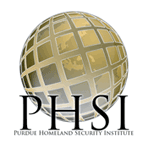Abstract
At the end of 2013, the devastating consequences of the Typhoon Haiyan that struck the Philippines on November 8, 2013, were exposed worldwide through intensive media coverage. The death toll reached more than 6,000 people, and around one million people were displaced and in desperate need of help and support. The international community queued up to offer support and help and showed that worldwide solidarity works when we know our “brothers and sisters” are in desperate need of help. But how can this international community, eager to respond when disaster strikes, better help before disasters strike? Vulnerable areas in the world where people are unprepared are mostly known; educational material, early warning systems, shelters, and other means of preparedness are available; it is estimated that $1 spent on preventative measures saves up to $7 in emergency response and rehabilitation. It is our conviction that global preparedness can be improved by creating an international base of shared knowledge and expertise in emergency management and by engaging the international aid community to help build disaster resilience in the places where it is needed most. The International Emergency Management Society (TIEMS) invites participation in an international initiative, Disaster Resilience Establishment in Vulnerable Societies (DREVS), to work toward these goals, making risk management and disaster preparedness a part of cultures throughout the world.
DOI
10.5703/1288284315345
Recommended Citation
Drager, K. H.., & Robertson, T. B. (2014). Global Response for Capacity Building of Disaster Preparedness: A TIEMS Initiative. In Randy R. Rapp & William Harland (Eds.), The Proceedings of the 10th International Conference of the International Institute for Infrastructure Resilience and Reconstruction (I3R2) 20-22 May 2014. (155-162). West Lafayette, Indiana: Purdue University.
Included in
Global Response for Capacity Building of Disaster Preparedness: A TIEMS Initiative
At the end of 2013, the devastating consequences of the Typhoon Haiyan that struck the Philippines on November 8, 2013, were exposed worldwide through intensive media coverage. The death toll reached more than 6,000 people, and around one million people were displaced and in desperate need of help and support. The international community queued up to offer support and help and showed that worldwide solidarity works when we know our “brothers and sisters” are in desperate need of help. But how can this international community, eager to respond when disaster strikes, better help before disasters strike? Vulnerable areas in the world where people are unprepared are mostly known; educational material, early warning systems, shelters, and other means of preparedness are available; it is estimated that $1 spent on preventative measures saves up to $7 in emergency response and rehabilitation. It is our conviction that global preparedness can be improved by creating an international base of shared knowledge and expertise in emergency management and by engaging the international aid community to help build disaster resilience in the places where it is needed most. The International Emergency Management Society (TIEMS) invites participation in an international initiative, Disaster Resilience Establishment in Vulnerable Societies (DREVS), to work toward these goals, making risk management and disaster preparedness a part of cultures throughout the world.



